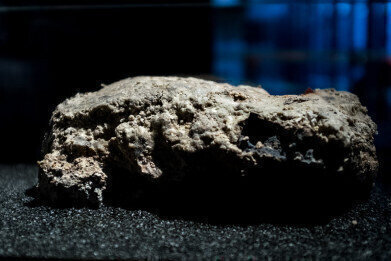Water/Wastewater
Bin It, Don't Block It - How to Combat Fatbergs
Jan 07 2020
Most of us labour under the impression that once we’ve flushed something down the toilet or drain, it’s no longer our problem. However, improper disposal of sanitary items, food waste and fats and oils are leading to a major problem in our sewer systems – fatbergs. Comprised of countless tonnes of fabrics, plastics and other miscellaneous rubbish, these congealed behemoths can cause blockages and cost millions of pounds to clear.
Due to the excessive eating and drinking that often dominates the festive period, fatbergs are a bigger problem during December and January than at any other time of the year. In particular, young people are guilty of pouring away the cooking fats used for roasting turkey and vegetables, with over a fifth of those surveyed by Thames Water confessing to doing so. As a result, the company is stepping up its “Bin it, don’t block it” campaign in order to try and avoid the worst consequences of the season.
What are fatbergs?
Fatbergs are created when oils and fats poured down the drain mix with items containing plastic content, such as female sanitary products, wet wipes and even baby’s nappies, congealing into a solid mess that sticks to the inside of pipes and causes costly blockages. Thames Water is forced to clear around 75,000 such blockages every single year, with a total cost of approximately £18 million.
The largest fatberg on record was discovered in September 2017, when sewer workers clad in hazmat suits grappled with a blockage weighing 130 tonnes beneath Whitechapel. The fatberg was equivalent to the size of 11 London double-decker buses and inspired a documentary and even a musical about it, while part of it was put on display at the Museum of London for a limited time.
When it comes to waste products infiltrating our waterways, microplastics are rightly decried as one of the most dangerous problems – but fatbergs aren’t far behind. “It’s really important that we try to change consumers’ behaviour,” explains Dina Gillespie of Thames Water. “People think that once they have flushed something away that it’s no longer their problem, but this is now a huge environmental issue – just as important as reducing plastics in my view.”
How to avoid contributing to fatbergs
While we are now capable of ever-more advanced techniques of clearing blockages and cleaning drainage systems – such as those on show at a recent iteration of the Water, Wastewater and Environmental Monitoring (WWEM) convention – the most effective method of getting rid of fatbergs is to avoid creating them in the first place. Thames Water have issued a handy guide for how to do so by amending your own habits.
In the kitchen, the company advise against pouring oils and fats down the drain, but instead allowing them to collect and cool in a plastic container such as yoghurt pots or Tupperware. Then, once hardened, they can be scooped out and disposed of in the bin. Food waste, meanwhile, should not be flushed down the plughole either, but instead recycled in organic waste bins where possible.
Meanwhile, bathroom drains can be kept clear by simply following the rule of the three Ps: poo, pee and paper. Anything else has no place in a toilet basin and should be disposed of in the bin, which means that wet wipes (even those labelled as flushable) and sanitary products should never be allowed to flush with the three Ps mentioned above.
Digital Edition
IET 34.2 March 2024
April 2024
Gas Detection - Biogas batch fermentation system for laboratory use with automatic gas analysis in real time Water/Wastewater - Upcycling sensors for sustainable nature management - Prist...
View all digital editions
Events
Apr 22 2024 Hannover, Germany
Apr 22 2024 Marrakech, Morroco
Apr 23 2024 Kuala Lumpur, Malaysia
Apr 23 2024 Kintex, South Korea
Apr 23 2024 Edmonton, AB, Canada


















